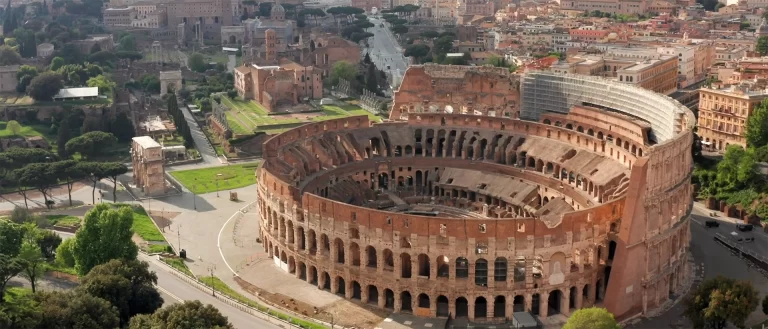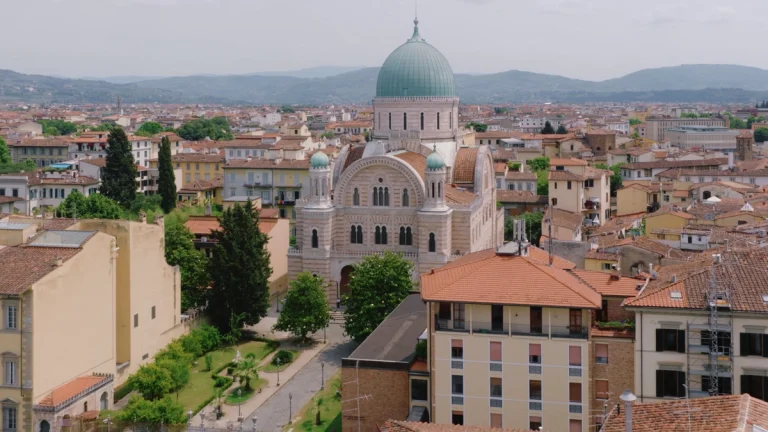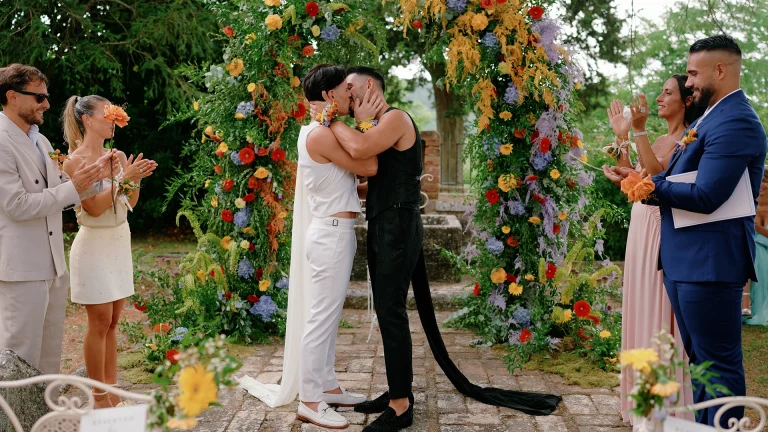A country of ancient history, world-renowned art, extraordinary landscapes, a naturally romantic atmosphere in every city and village, and a culinary tradition admired everywhere — do you really need more reasons to get married in Italy? Couples from all over the world cross oceans and mountains to celebrate their love here, and it’s not hard to see why: Italy has something truly special. What many don’t realize, however, is that the country is far from uniform. The contrasts between Northern, Central and Southern Italy are profound and can greatly influence the overall wedding experience.
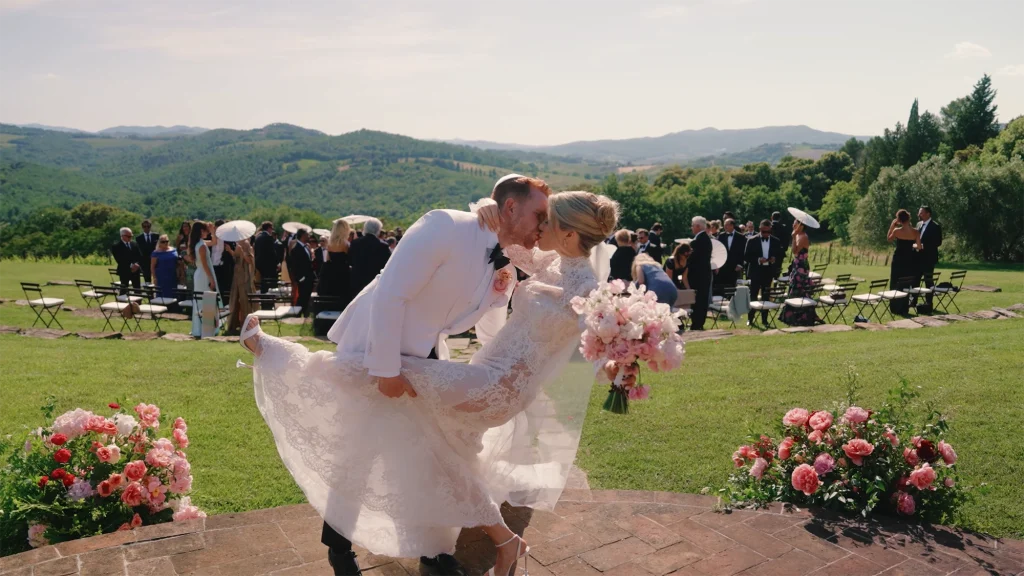
Climate, scenery, cultural heritage, cuisine and architecture vary so widely from one region to another that each area can feel like a different country to a first-time visitor. This diversity is an advantage. It allows couples to choose the setting that best reflects their vision — whether that means a refined and elegant celebration, a ceremony steeped in art and history, or a vibrant, sun-kissed event with a distinctly Mediterranean spirit. Understanding the unique character of each region is essential for efficient planning, coordination with local suppliers and ensuring that every detail aligns with the couple’s expectations.

Northern Italy, for example, is known for its elegant and sophisticated settings. From the clear waters of the pre-Alpine lakes, such as Lake Como and Lake Garda, to the dramatic landscapes of the Dolomites, couples can find venues that blend nature, architecture and luxury hospitality. Central Italy, by contrast, is famous for its rolling hills, medieval villages and artistic cities like Florence and Siena, offering an exceptional historical and cultural backdrop for weddings rooted in tradition and beauty. Southern Italy completes the picture with its Mediterranean landscapes, stunning coastlines and seaside towns. Regions such as Puglia, Sicily and the Amalfi Coast provide the perfect stage for lively, sun-filled celebrations in an atmosphere that is both warm and unmistakably Italian.
Getting Married in Northern Italy: Elegance and Refined Settings
Getting married in Northern Italy means choosing elegance and refined scenery. This region is often the preferred choice for couples seeking a wedding that is sophisticated, meticulously planned and set against dramatic natural backdrops. Northern Italy offers a unique combination of mountain landscapes, lakes and historic cities, allowing for a seamless blend of luxury, comfort and aesthetic beauty.

The pre-Alpine lakes, particularly Lake Como and Lake Garda, are especially popular among international clients. These areas provide a wide variety of historic villas, luxury hotels and panoramic gardens — ideal settings for private ceremonies and exclusive receptions. The lake districts are among the wealthiest and most serviced regions in Italy, offering exceptionally high standards. One of the most renowned venues is Villa del Balbianello, a property of such surreal beauty that it was chosen as the filming location for Padmé and Anakin’s wedding scene in the iconic movie Star Wars: Episode II – Attack of the Clones.

The Dolomites and the Piedmontese and Lombard Alps offer a more intimate and dramatic alternative. Mountain landscapes here change dramatically with the seasons, and chalets or mountain lodges can be transformed into exclusive venues, providing an atmosphere that is both elegant and intimate. Northern cities such as Milan, Venice and Verona complete the offering with historic buildings and iconic architecture, perfectly suited to luxury weddings with an urban edge. These locations combine international accessibility, top-tier services and breathtaking backdrops for photography and wedding videography — essential elements for any couple planning a destination wedding in Italy.
The Most Iconic Locations in Northern Italy
Northern Italy is home to some of the most refined and internationally renowned venues for destination weddings. What unites these locations is the combination of landscape, architecture and top-tier services. Each area has a distinct identity, resulting in very different aesthetic and logistical experiences. Lake Como is perhaps the most iconic destination. Famous for its understated elegance and the mountain scenery framing its waters, it is a preferred choice for high-level weddings.

Among the most celebrated venues are Villa del Balbianello, an 18th-century residence surrounded by terraced gardens, and Villa d’Este, a historic aristocratic estate now converted into a luxury hotel. Both offer a rare combination of privacy, elegance and natural beauty, making them ideal for high-profile ceremonies and cinematic-quality wedding videography.

Venice, on the other hand, is unique: a city entirely suspended on water, where every movement becomes part of the wedding experience. The most prestigious venues include Palazzo Pisani Moretta, overlooking the Grand Canal, and the Aman Venice, known for its perfect balance of historic architecture and contemporary comfort. A wedding in Venice is highly scenic, but it requires careful planning of transportation and logistics — aspects that local vendors handle with extensive experience.

Finally, Verona combines romance and history with a more intimate approach. Known for the Arena and the legend of Romeo and Juliet, it offers Renaissance palaces, private courtyards and historic residences such as Villa Zambonina, ideal for elegant yet not overly formal ceremonies. Its strategic location, between the lakes and Venice, also makes it a practical base for weddings with international guests.
Read also: A Vogue Wedding in the Exclusive Setting of the Belmond Hotel Cipriani in Venice
Getting Married in Central Italy Among Art and History
Central Italy is an ideal choice for couples who want a wedding surrounded by history, art, rolling hills and authentic Italian cuisine. The region offers a unique combination of medieval villages, historic villas and artistic cities such as Florence, Siena and Perugia, allowing couples to host ceremonies that are discreetly elegant yet rich in cultural charm. The Tuscan and Umbrian countryside — with its vineyards, olive groves, soft landscapes and warm golden light — provides a perfect backdrop for wedding videography, making every frame distinctive and memorable.

Beyond its natural beauty, Central Italy stands out for the quality of its hospitality and wedding services. Luxury farmhouses, restored castles and private villas make it possible to plan both intimate ceremonies and large receptions, with the flexibility to tailor every detail to the couple’s vision. The combination of history, architecture and natural scenery creates an exclusive atmosphere that appeals to international couples seeking an authentically Italian experience, blending sophistication with warmth.

The region is also known for its outstanding culinary and wine traditions, which can easily be incorporated into the wedding menu to highlight local heritage. Central Italy is well connected to major airports and easily accessible from other key Italian cities, making travel and vendor coordination simple for international guests. Today, this area remains one of the most popular choices for destination weddings in Italy, thanks to its mild climate, logistical convenience and ability to deliver a refined celebration without losing the authenticity of true Italian culture.
Read also: Three Days of Love in Tuscany: Belmond Castello di Casole Wedding
A Wedding in Tuscany, A Timeless Classic
Tuscany is undoubtedly one of the most iconic wedding destinations in Italy, chosen every year by international couples for its balance of natural beauty, art and history. The region offers unmistakable scenery — the rolling hills of Chianti dotted with vineyards and olive groves, perfectly preserved medieval villages and artistic cities such as Florence and Siena, which form the cultural heart of the region. Together, these elements create an ideal setting for weddings that are elegant and refined, yet warm and inviting.
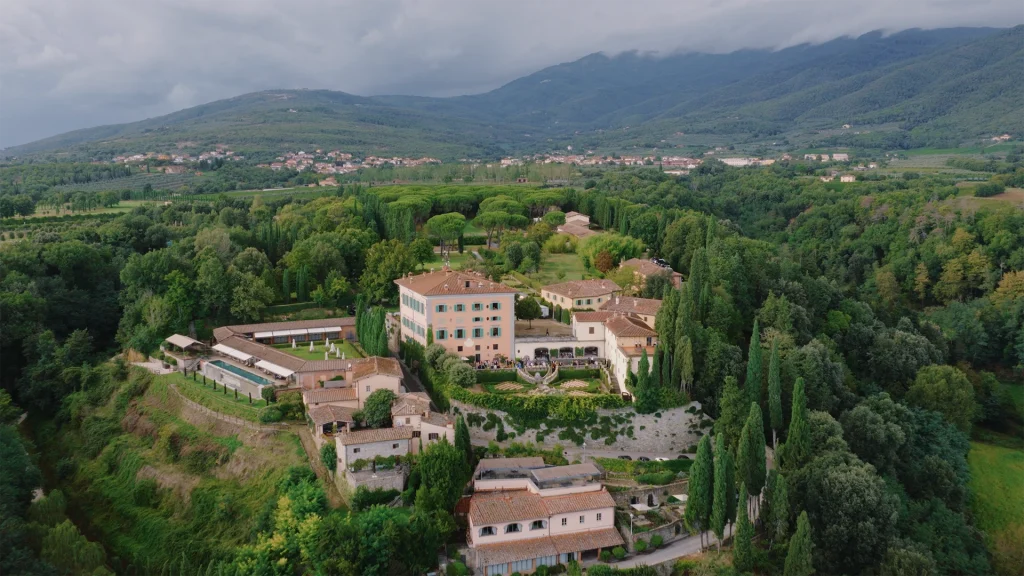
Florence, with its Renaissance architecture and historic palaces, hosts some of the most prestigious venues for both civil and religious ceremonies, allowing couples to celebrate their marriage surrounded by an unparalleled artistic heritage. Siena, with its cobblestone streets and distinctly medieval squares, offers a more intimate and romantic atmosphere, perfect for couples seeking a visually striking and photogenic wedding. The villas and farmhouses of the Chianti area combine the beauty of the natural landscape with the comfort of high-end hospitality, making it possible to host exclusive, tailor-made receptions nestled among vineyards, cypress trees and gently rolling hills.
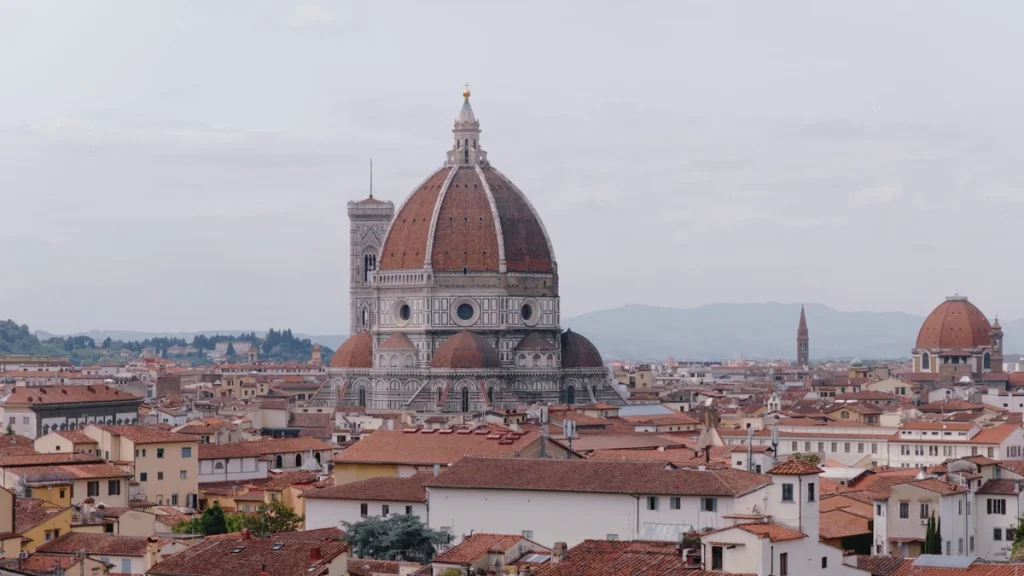
From a visual perspective, Tuscany offers exceptional opportunities for both photography and videography. The natural light, the warm tones of the countryside and villages, and the variety of architectural styles guarantee visually stunning and memorable results. In addition, the region benefits from an extensive network of experienced professionals in the international wedding industry — including planners, caterers and videographers — who know the area intimately and can ensure seamless, high-quality coordination.
Getting Married in Southern Italy: Sun, Sea and Mediterranean Charm
Weddings in Southern Italy have a distinctly bright, Mediterranean character, defined by spectacular natural scenery and a generally favorable climate for most of the year. The southern regions — such as Campania, home to the stunning Amalfi Coast and the Gulf of Naples, as well as Puglia and Sicily — offer a combination of crystal-clear sea, historic villages and elegant villas overlooking the coast. This part of the country is especially appreciated by international couples who love seaside landscapes and seek a lively yet relaxed atmosphere.
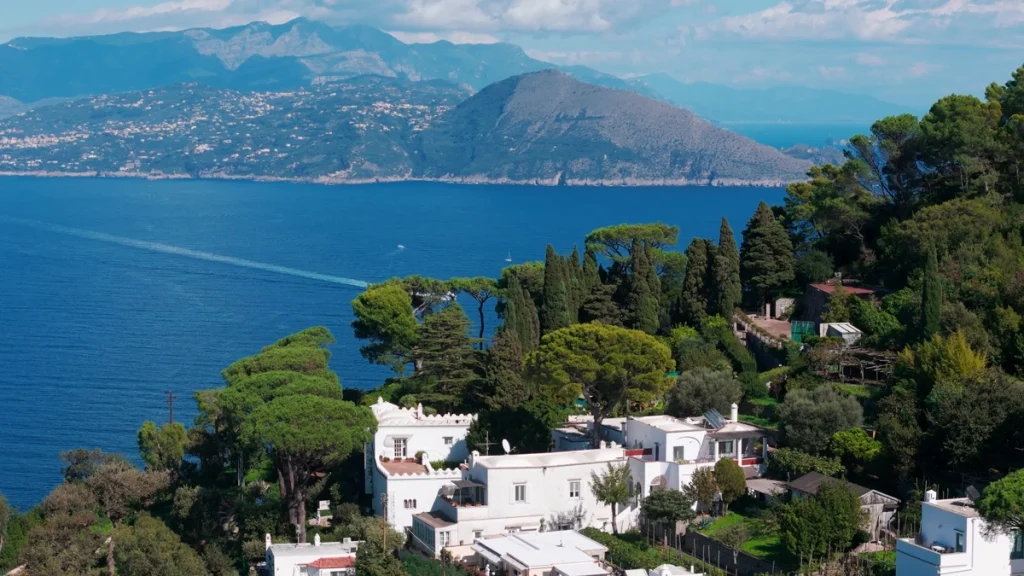
The Amalfi Coast, with its dramatic cliffs and picturesque villages like Positano and Ravello, provides the perfect setting for truly one-of-a-kind weddings. Outdoor ceremonies and panoramic receptions suspended above the sea create an experience that is both exclusive and unforgettable. In Puglia, weddings are often held in restored masserie — traditional stone farmhouses — or in ancient trulli, offering elegant yet distinctive spaces suitable for both intimate gatherings and large celebrations. Sicily, on the other hand, blends tradition and modernity with its castles, seaside villas and historic venues set against extraordinary natural landscapes.

Beyond its scenic beauty, Southern Italy is also known for the warmth and hospitality of its local vendors, as well as the exceptional quality of its cuisine. Menus often highlight regional products and traditional flavors, creating a dining experience that is both authentic and refined. From a visual perspective, the South offers some of the most striking settings for photography and videography: intense light, vibrant colors and picturesque views that make every wedding visually unforgettable.
The Most Famous Wedding Locations in Southern Italy
Southern Italy offers some of the most refined and visually striking wedding venues, ideal for couples seeking an exclusive and authentically Mediterranean setting. Among the most sought-after destinations are Capri, the Amalfi Coast and Puglia — three very different areas, yet all defined by exceptional service quality, strong aesthetic identity and breathtaking coastal landscapes.

Capri is the perfect choice for couples who value elegance and discretion. Easily accessible from Naples, the island combines natural simplicity with a sense of understated luxury. The Capri Palace Jumeirah, located in Anacapri, is one of the island’s most prestigious venues. It features panoramic terraces, exceptional cuisine and world-class service, making it ideal for sophisticated weddings planned with meticulous attention to detail. For those seeking a more intimate and historically rich setting, Villa Lysis offers a charming alternative: a neoclassical villa overlooking the sea, surrounded by peace and greenery — perfect for private ceremonies with an artistic and cultural flair.

On the Amalfi Coast, the blend of dramatic cliffs and historic architecture creates a truly unique atmosphere. In Ravello, Villa Cimbrone is widely regarded as one of Italy’s most iconic wedding venues. Its Italian-style gardens and the famous Terrazza dell’Infinito offer an unmatched sea view, making it ideal for outdoor ceremonies and receptions. The villa combines classical elegance, exquisite attention to detail and a cinematic visual setting for top-tier wedding videography.

Finally, in Puglia, Borgo Egnazia near Savelletri di Fasano represents the perfect balance between authenticity and contemporary luxury. Designed to resemble a traditional Apulian village yet offering the amenities of a five-star resort, it is one of the most in-demand venues for international weddings — including those of well-known celebrities. Its minimalist architecture, flawless organization and capacity to host events of any scale make it a standout choice for couples seeking a polished yet deeply Italian experience.
Seasonality and Climate: How to Choose the Perfect Wedding Date
Choosing the right season plays a crucial role in planning a wedding in Italy, as the climate varies significantly between the North, Center and South, influencing not only the availability of venues but also the comfort of your guests and the quality of your wedding photos and video. In Northern Italy, winters can bring snow and colder temperatures, especially in mountain areas such as the Dolomites, making outdoor ceremonies less practical. Spring and autumn offer milder weather and more picturesque landscapes, though the sun tends to set earlier — something to consider when planning your wedding timeline.
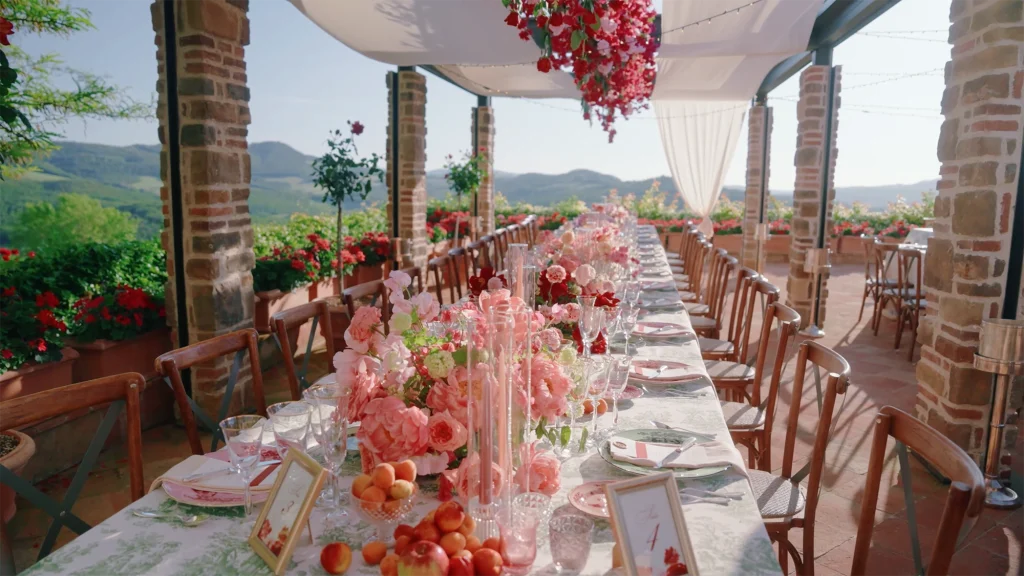
Summer, on the other hand, is warm and pleasant, particularly in northern cities, and offers long days of natural light that are perfect for video footage and outdoor receptions. In Central Italy, the climate is generally mild throughout the year. Spring and autumn are especially pleasant, while summer temperatures, though warm, rarely become excessively hot. The Tuscan and Umbrian hills, with their sweeping panoramas, provide stunning backdrops in every season, but late spring and early autumn are particularly favored by couples for their ideal balance of light, color and temperature. Winters are milder than in the North, allowing for indoor celebrations in castles or historic villas without significant logistical challenges.
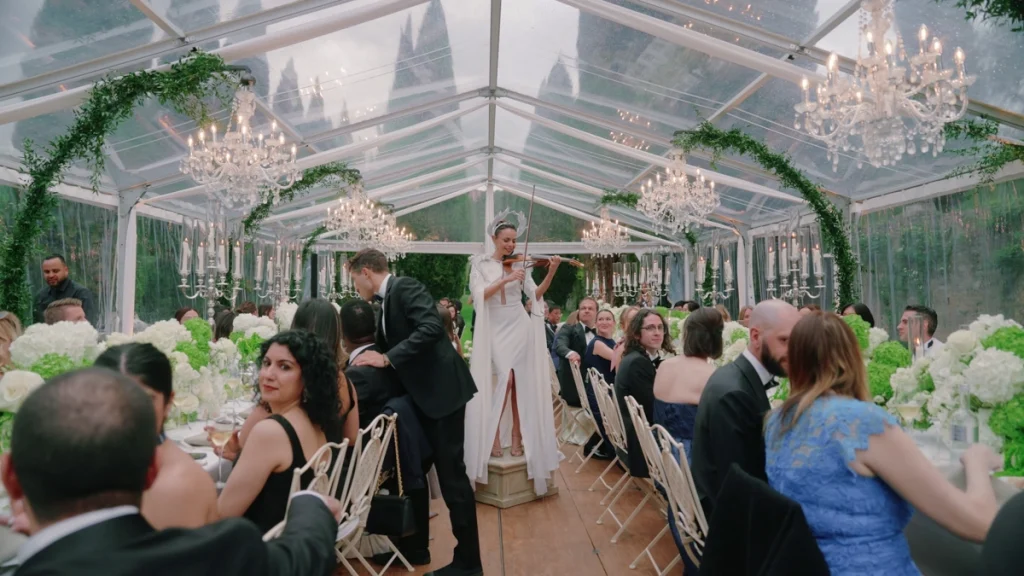
Southern Italy enjoys a warmer, sunnier climate for most of the year, with hot, dry summers and mild winters. This makes the South particularly suitable for outdoor weddings in seaside villas or countryside masserias, even during the cooler months. However, in coastal destinations, it’s advisable to plan ceremonies and receptions during the cooler hours of the day, as the summer sun can be intense. Understanding the climatic differences between Northern, Central and Southern Italy is essential for selecting the ideal wedding date — ensuring maximum comfort for guests, optimal conditions for photographers and videographers, and a seamless overall organization of your special day.
The Role of the Videographer in Capturing the Emotions of Your Italian Wedding
When you travel so far and plan such a meaningful day in a country away from home, it’s only natural to want every single detail to be remembered and cherished — not just for 24 hours, but for a lifetime. That’s why the videographer plays such a crucial role in making any wedding in Italy truly unforgettable, especially for international couples who choose our country as their dream destination. Unlike photography, which captures isolated moments, video tells the full story — preserving emotions, gestures and fleeting details that often go unnoticed during the day.

In a country like Italy, where landscapes, architecture and natural light change dramatically from North to South, an experienced videographer can turn these variations into a powerful narrative element, making every film unique. Choosing the right videographer can be challenging, particularly when you have to make your decision online and compare numerous talented professionals. Our best advice is to rely on local experts whenever possible. They not only understand the language and culture, but are also familiar with local vendors, venues and regulations, allowing them to work smoothly without disrupting the flow of the day and to adapt quickly if unexpected situations arise.

A great videographer shouldn’t simply document the wedding as it happens — they should tell the couple’s story through thoughtful editing, carefully chosen music and a refined attention to detail. These are the elements that make the difference between a simple reportage and a true cinematic experience — something that feels less like a documentary and more like a love film. In recent years, this cinematic approach has become one of the strongest trends in wedding videography, often complemented by creative touches such as Super8 or VHS-style footage, adding a vintage and deeply romantic aesthetic to the final edit.
Practical Tips for Planning a Destination Wedding in Italy
Planning a wedding in Italy from abroad requires careful organization and a solid understanding of the local context. Foreign couples need to take into account several practical aspects, starting with the legal documentation required for a civil or religious ceremony. Procedures vary depending on nationality and the type of ceremony, so it is advisable to consult the relevant consular authorities or the local municipality where the wedding will take place. Taking care of these formalities well in advance is essential to avoid delays or bureaucratic complications.
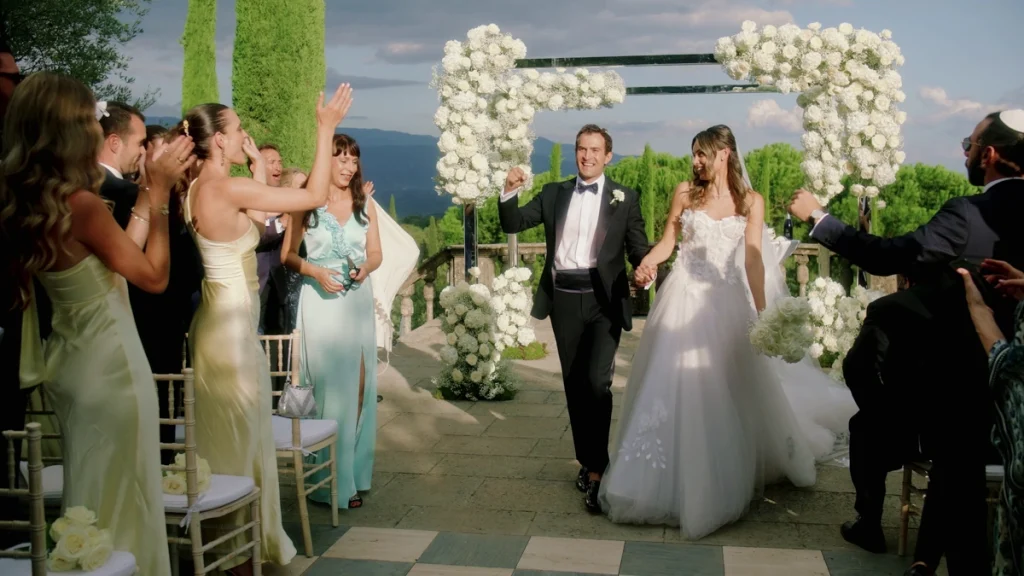
A second key factor, as mentioned earlier, concerns the selection of local vendors. Working with Italian professionals — not only videographers, but also wedding planners, photographers, florists and caterers — is fundamental to ensuring a smooth and efficient organization. Italian vendors who specialize in destination weddings are highly experienced with international clients and understand the linguistic, logistical and cultural nuances involved. A wedding planner, in particular, can act as a bridge between the couple and local suppliers, coordinating every detail on site and facilitating communication.
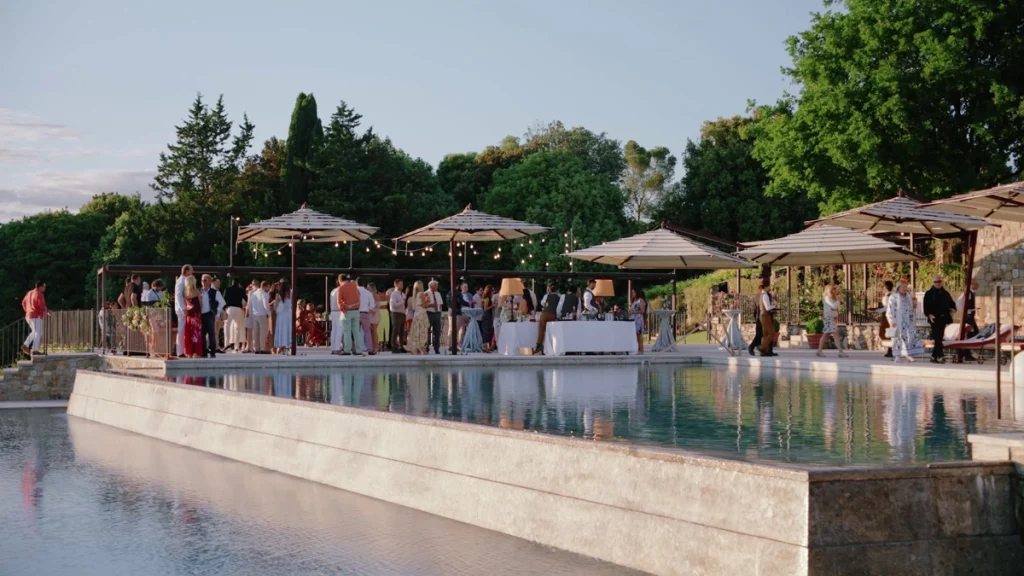
Logistics are another crucial aspect. It is important to consider the distance between the ceremony and reception venues, guest transfers, and the availability of nearby accommodations. The most popular regions for international weddings — such as Tuscany, Puglia, Campania and Lombardy — offer excellent transport connections, including international airports, and a wide range of high-end accommodations, making event management significantly easier.

Finally, cultural sensitivity can make a real difference. Embracing the local pace, being mindful of seasonal ingredients, and showcasing regional specialties all help create a wedding that feels both authentic and harmonious. While organizing a destination wedding in Italy requires attention to detail, with thoughtful planning and the support of trusted local professionals, every element can be handled seamlessly, ensuring an impeccable and truly memorable experience for both the couple and their guests.













